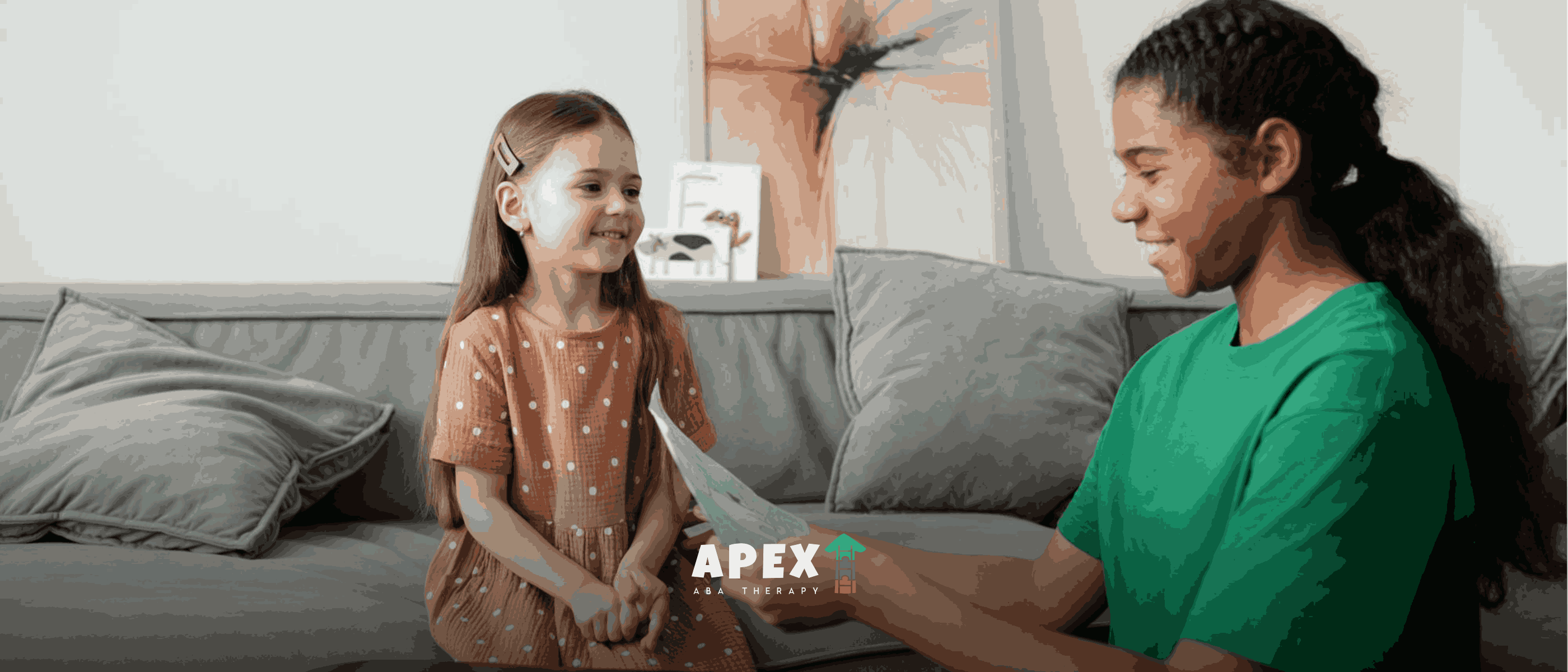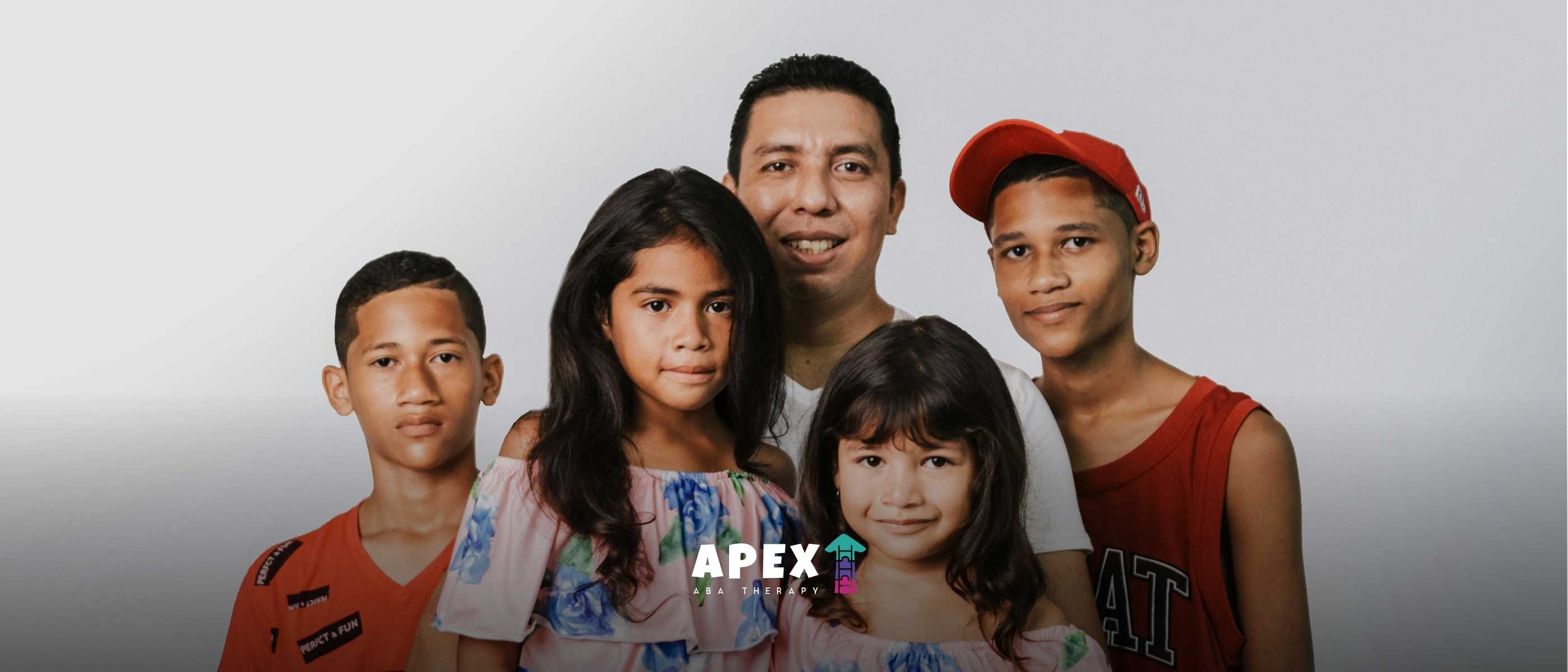Autism Sensory-Friendly Energy-Efficient Lighting
Designing Welcoming Spaces: Lighting Solutions for Individuals with Autism

Autism Sensory-Friendly Energy-Efficient Lighting
Understanding the Role of Lighting in Autism Support
Lighting plays a pivotal role in shaping the sensory experiences of individuals with Autism Spectrum Disorder (ASD). Sensory-friendly and energy-efficient lighting solutions can foster more comfortable, supportive living environments by mitigating sensory overload and enhancing well-being. This article delves into the nuances of lighting choices that cater specifically to the needs of those with autism, offering insights into creating calming and efficient living spaces.
Exploring Light Sensitivity in Autism

What are the symptoms of light sensitivity in individuals with autism?
Individuals with Autism Spectrum Disorder (ASD) often grapple with heightened light sensitivity, leading to a variety of symptoms. They may experience discomfort from artificial lighting, particularly from harsh fluorescent lights, which can result in typical responses such as light avoidance behaviors. Visual disturbances, including blurriness and excessive eyestrain, are common complaints.
Many individuals report significant discomfort, with some even experiencing headaches associated with exposure to bright lights. This sensitivity can provoke anxiety or meltdowns when immersed in overly bright environments. Studies have shown that visual processing deficits, present in more than half of autistic adolescents, exacerbate these reactions. Additionally, certain wavelengths of light can be particularly bothersome, causing further discomfort and distress.
The cumulative effect of these symptoms can make it challenging for individuals with autism to navigate spaces with strong, flickering, or overly bright lighting. Overall, light sensitivity significantly influences the daily experiences of many on the spectrum, necessitating careful consideration in environments where they spend time.
Challenges faced by individuals with light sensitivity
Navigating brightly lit environments poses numerous challenges for individuals with light sensitivity. Bright or flickering lights can easily lead to sensory overload, increasing anxiety levels and causing difficulties in focus and communication. This often results in avoidance of public spaces or engagement in social interactions, further isolating those affected.
Moreover, light sensitivity can negatively impact a person's daily functioning. Tasks that require prolonged attention in poorly-adjusted lighting can become increasingly frustrating, ultimately affecting educational or workplace performance. The inability to cope with certain lighting conditions may limit participation in activities that others often enjoy, reinforcing a sense of exclusion.
Designing sensory-friendly environments through effective lighting strategies is crucial. Integrating softer, adjustable lighting can significantly enhance comfort and support the engagement of individuals experiencing light sensitivity, allowing them to thrive in various settings.
The Importance of Sensory-Friendly Lighting

Characteristics of sensory-friendly lighting
Sensory-friendly lighting is designed to minimize discomfort for individuals with Autism Spectrum Disorder (ASD). It primarily focuses on the following key features:
- Soft and Consistent Illumination: Soft lighting options like LED bulbs provide flicker-free and stable brightness, reducing visual stress.
- Adjustability: Lighting that includes dimmers and color-changing capabilities allows for customization according to individual sensory needs.
- Calming Color Schemes: Colors such as soft blues and greens are particularly effective in creating a soothing environment, promoting relaxation, and enhancing focus.
- Natural Light Integration: Utilizing natural light or natural light simulators helps to regulate circadian rhythms, supporting better sleep and mood stability.
Benefits for individuals with autism
The benefits of implementing sensory-friendly lighting for individuals with autism are significant:
- Reduced Sensory Overload: By mitigating harsh fluorescent or flickering lights, sensory-friendly options help alleviate anxiety and discomfort.
- Enhanced Focus: Customizable brightness promotes better concentration, facilitating more effective learning and engagement in activities.
- Emotional Stability: Soft, mellow lighting contributes to an environment where individuals can feel safe and calm, aiding emotional regulation.
- Improved Social Interactions: Enhanced mood through appropriate lighting can lead to better social engagement and communication.
Overall, sensory-friendly lighting plays a vital role in creating supportive spaces for individuals with autism, promoting comfort and emotional well-being.
The Therapeutic Impact of Sensory Lights
Role of sensory lights in autism support
Sensory lights are vital for individuals with Autism Spectrum Disorder (ASD) due to their ability to create calming environments tailored to specific sensory needs. Many autistic individuals experience heightened light sensitivity, making them vulnerable to overstimulation from traditional lighting. Sensory rooms equipped with soft LED lights, bubble tubes, and dynamic light displays can provide safe spaces that reduce anxiety and foster engagement.
Emotional and practical benefits
Moreover, the colors emitted by sensory lights can significantly influence emotional well-being. For instance, blue light is noted for promoting calmness and enhancing creativity. By allowing individuals to interact with visual stimuli in a controlled manner, sensory lights not only provide relief but also encourage focus and social interaction. This adaptive lighting approach helps combat feelings of social isolation and distress often associated with sensory overload.
| Benefits of Sensory Lights | Description |
|---|---|
| Calming Environment | Reduces anxiety and provides a safe space for relaxation. |
| Mood Enhancement | Certain colors like blue help promote calmness and focus. |
| Enhanced Engagement | Encourages interaction in a non-overstimulating way. |
| Reduction of Overstimulation | Protects against the discomfort caused by harsh or flickering lights. |
In summary, sensory lights play a crucial therapeutic role in supporting individuals with autism, enhancing their overall comfort, focusing abilities, and emotional balance.
Which Lighting Solutions Best Support Autism Needs?

The Best Lighting Types for Autism Support
Individuals with autism often thrive in environments that feature gentle and soothing lighting. Mellow colors, particularly soft blues and greens, are especially effective in promoting relaxation and emotional balance. These shades have been shown to help individuals with autism focus better while also reducing the risk of anxiety prompted by harsh lighting.
Adjustable LED lighting is one of the best options available. It provides consistent brightness without flicker, reducing sensory overload, which is crucial for those sensitive to bright or changing lights. Additionally, integrating natural light supports mood regulation and alleviates symptoms associated with seasonal affective disorder (SAD). Light therapy lamps emitting around 10,000 lux can also assist in maintaining healthy circadian rhythms, further enhancing sleep quality and daytime alertness.
Lighting's Effect on Mood and Focus
The type and quality of lighting can significantly influence mood and focus for individuals with autism. Too bright or flickering lights can lead to discomfort, confusion, and heightened anxiety. In contrast, well-designed light environments that incorporate soft, diffused lighting can create a calming atmosphere, conducive to better focus and engagement in daily activities.
By employing energy-efficient smart lighting systems equipped with adjustable settings, families can achieve a tailored sensory experience that responds to individual needs. Such lighting not only enhances comfort but also aids in addressing the specific challenges faced by individuals with autism, ultimately promoting their overall well-being.
Creating Supportive Lighting Environments

How can you create a supportive lighting environment for someone with autism?
To create a supportive lighting environment for someone with autism, it’s essential to focus on gentle, consistent illumination. Individual sensory needs vary greatly, so using soft lights, such as LED options, can help manage sensory overload.
LED lighting is particularly advantageous; it offers customizable brightness and color choices, creating soothing atmospheres. Adjustable settings allow caregivers to find the perfect lighting balance to promote comfort. Implementing natural light simulators can further enhance emotional well-being by mimicking sunlight, which supports circadian rhythms and improves mood stability.
Flickering or harsh lights should be avoided, as they can exacerbate anxiety and discomfort. Instead, utilizing warm-toned lights and ensuring that spaces have a steady light source can help foster relaxation. Creating designated calming areas with dimmable lights can provide retreat options for individuals needing sensory breaks.
What energy-efficient options can support sensory needs?
Energy-efficient lighting solutions play a significant role in creating supportive environments. Utilizing LED lighting dramatically reduces energy consumption—up to 75% less than traditional incandescent bulbs. These bulbs have long lifespans, ranging from 15,000 to 50,000 hours, meaning less frequent replacements.
Flexible smart lighting systems allow for further adaptability. Using mobile apps or voice commands, caregivers can customize brightness, color temperature, and even light schedules to align with daily routines. This flexibility not only creates comfort but also offers significant savings on energy costs, which families can redirect towards therapies and educational support for their autistic family members.
The integration of both effective lighting solutions and energy efficiency contributes to a nurturing atmosphere, aiding individuals on the autism spectrum in their daily lives.
The Role of Energy Efficiency in Autism Support
Benefits of energy-efficient lighting
Energy-efficient lighting plays a crucial role in enhancing the living environments for individuals with Autism Spectrum Disorder (ASD). LED lighting, for instance, provides gentle and consistent illumination that significantly reduces sensory overload. With the ability to customize brightness and color temperature, these smart lighting solutions create calming, sensory-friendly spaces. Mellow colors such as blue and green promote relaxation while helping to improve focus and emotional balance, which is vital for individuals who often experience heightened sensitivity to light.
Moreover, natural light integration contributes positively to mood regulation and sleep patterns. Natural light simulators help maintain circadian rhythms, essential for emotional well-being and overall health. This kind of lighting can enhance comfort, promote better focus, and alleviate symptoms of seasonal affective disorder (SAD).
Cost savings and environmental impact
Using energy-efficient systems not only supports the sensory needs of individuals but also leads to substantial cost savings. Families can save between $600 to $1,200 annually by switching to LED lighting and incorporating solar power, allowing for funds to be redirected towards therapies and support services for their loved ones with autism. Furthermore, this shift significantly reduces energy consumption, contributing to a lower environmental impact.
In summary, energy-efficient lighting emerges as an essential element in creating supportive environments. It addresses the sensory sensitivities of individuals with autism while simultaneously promoting sustainability and cost-effectiveness.
Smart Lighting Solutions for Autism-Friendly Spaces

Innovations in smart lighting technology
Smart lighting technology has made significant strides in creating supportive environments for individuals with Autism Spectrum Disorder (ASD). LED lighting stands out as an ideal solution due to its energy efficiency, producing gentle, flicker-free illumination that minimizes sensory overload. Smart lighting systems not only provide consistent brightness but also enable families to create calming spaces tailored to individual sensory needs.
Automatic lighting features, such as dimming and color temperature adjustment, allow caregivers to customize the atmosphere based on specific moments. For example, Mellow colors like soft blues and greens can be used during study or relaxation times, promoting emotional balance and reducing anxiety.
Customizable lighting features
Programmable smart lighting systems can simulate natural light patterns, gradually adjusting brightness and color throughout the day to maintain circadian rhythms. Families can set pre-scheduled lighting changes, ensuring that transitions are smooth and predictable—an important factor for individuals with sensitivities.
These customizable options promote relaxation and focus, making daily living more comfortable and manageable. Additionally, the integration of smart technologies in lighting design is not only beneficial for sensory comfort but also helps to save energy, providing financial resources for therapies and support services tailored to autism care.
In conclusion, smart lighting solutions effectively enhance the quality of life for individuals with autism, offering environmental adaptability essential for their well-being.
Understanding the Benefits of Adaptive Lighting
Adaptive lighting in daily routines
Adaptive lighting plays a significant role in the daily routines of individuals with Autism Spectrum Disorder (ASD). It allows for the customization of brightness and color temperature, creating sensory-friendly spaces that help to reduce overstimulation. For instance, programmable smart lighting can smoothly adjust settings throughout the day, mimicking the natural sunlight cycle. This helps in regulating circadian rhythms, which in turn assists with sleep patterns and mood stability for individuals.
Moreover, using mellow colors like soft blue and green can create calming environments that promote relaxation and enhance focus. The consistency of LED lighting eliminates flickering and harsh shadows, making the overall atmosphere more soothing and supportive.
Promoting well-being through lighting
The impact of lighting on emotional and sensory well-being cannot be overstated. Proper lighting design can significantly improve comfort for individuals with autism by using soft, diffused light rather than bright fluorescents, which can trigger anxiety. Natural light and its simulators have been shown to uplift moods and maintain emotional balance, crucial for individuals who may struggle with sensory sensitivities.
An effective adaptive lighting strategy not only enhances individual comfort but also reduces energy consumption. Families can save on energy costs, allowing more resources to support therapies and services for persons with autism. Overall, the incorporation of adaptive lighting solutions greatly contributes to creating an environment conducive to well-being and engagement.
Integrating Natural Lighting in Autism Support
Natural Light Effects on Mood and Circadian Rhythms
Natural light plays an important role in regulating mood and circadian rhythms, which is particularly beneficial for individuals with Autism Spectrum Disorder (ASD). Exposure to natural sunlight can alleviate symptoms of seasonal affective disorder (SAD) and enhance overall emotional stability. This regulation of circadian rhythms is crucial as it supports better sleep patterns, which can drastically improve mood and daily functioning.
Natural light simulators are especially effective in spaces where access to outdoor light may be limited. They mimic the varying qualities of sunlight throughout the day, promoting a sense of well-being and alertness. This helps create environments that feel uplifting and calming at the same time, reducing feelings of anxiety associated with sensory overload.
Design Strategies for Light Access
Incorporating natural light into spaces designed for individuals with autism can be achieved through strategic architectural choices. Here are several design strategies to ensure ample access to natural light:
| Strategy | Description | Benefits |
|---|---|---|
| Large Windows | Use oversized windows to maximize sunlight entry. | Improves mood; reduces stress. |
| Skylights | Incorporate skylights to bring in overhead light. | Enhances well-being; soft light. |
| Light Shelves | Install shelves that reflect sunlight deeper into the room. | Uniform illumination; reduces glare. |
| Open Layouts | Design open spaces to allow light flow and reduce shadows. | Eases sensory processing. |
By implementing these strategies, caregivers can create sensory-friendly environments that foster relaxation and support the emotional needs of individuals with ASD. Providing access to natural light helps improve both their comfort and quality of life.
Personalizing Lighting for Autism Care
Lighting Customization for Individual Needs
Creating sensory-friendly environments is essential for individuals with Autism Spectrum Disorder (ASD). Customizable lighting solutions, particularly LED systems, offer significant benefits by allowing adjustments in brightness and color temperature. This flexibility helps in meeting the unique sensory needs of individuals with autism, who often have heightened sensitivities to light. For instance, soft and mellow colors like gentle blues and greens can promote relaxation, enhance focus, and reduce anxiety.
Moreover, smart lighting technology enables families to program lighting that simulates natural light patterns, smoothly transitioning brightness throughout the day to align with circadian rhythms. This not only improves mood and well-being but significantly enhances the comfort of autistic individuals.
Balancing Comfort and Functionality
Effective lighting design in homes and educational settings can profoundly affect individuals with autism. Families can benefit from energy-efficient smart lighting that combines functionality with comfort. For instance, dimmable LED lights reduce glare and prevent sensory overload, while programmable systems help maintain a stable emotional environment.
The impact of a well-designed lighting system can lead to an improved quality of life, reducing anxiety and fostering a supportive atmosphere for individuals with autism. By incorporating features like adjustable color settings and glare-free illumination, caregivers can create spaces that encourage relaxation and concentration, essential for effective functioning.
Conclusion: Crafting Calming Spaces through Lighting
By understanding the interplay between lighting and sensory experiences, caregivers and designers can create calming, supportive spaces that address the unique needs of individuals with autism. The thoughtful application of energy-efficient, sensory-friendly lighting not only enhances comfort and well-being but also fosters an environment where individuals with autism can thrive. Implementing these strategies is an empowering step towards ensuring that our living spaces support diverse sensory needs and contribute to a better quality of life.
References
- Autism and energy-efficient smart lighting - Cross River Therapy
- Enhancing Spaces with Autism Sensory-Friendly Energy-Efficient ...
- Autism sensory-friendly energy-efficient lighting - Cross River Therapy
- Autism Sensory-Friendly Energy-Efficient Lighting - Golden Steps ABA
- Clean Energy for Sensory-Friendly Autism Homes - Bridge Care ABA
- Shining a Light on Autism: Benefits of Energy-Efficient Smart Lighting
- Autism-Friendly Energy-Saving Tips - Golden Steps ABA
Frequently Asked Questions
.jpg)
Autism And Bed Wetting: Unlocking Solutions
Explore the connection between autism and bedwetting and find practical insights and solutions for parents and caregivers. Discover how understanding and support can make a difference in managing this common challenge for children and individuals on the autism spectrum.

Proven Examples of Smart Goals for Students with Autism
Unlock the potential of students with autism through proven examples of SMART goals. Set them up for success!
.jpg)
What is the Sensory Processing Disorder ICD-10 Code?
If you or someone you know has been diagnosed with Sensory Processing Disorder (SPD), you may have heard of the ICD-10 code. In this article, we'll explain what the SPD ICD-10 code is, what it means, and why it's important.

Understanding Vestibular Stimming in Autism
Demystifying vestibular stimming in autism: Understand the impact, strategies, and support for individuals. Uncover the power of self-regulation through stimming.

Do Amish Kids Get Autism?
Explore the prevalence of autism in Amish children and uncover the factors that may contribute to this phenomenon. Delve into the unique characteristics of Amish communities and their impact on autism rates.

Breaking Barriers: Free Sensory Toys for Autism That Make a Difference
Discover life-changing free sensory toys for autism! Unlock the power of sensory play for children with autism.

Famous People Thriving with Autism or Aspergers Syndrome
Discover the extraordinary journeys of famous people thriving with autism and Asperger's syndrome. Unveil the inspiring stories of icons who break stereotypes.

IEP Goals for Autism: Ultimate Guide
Unlock the potential: Constructing meaningful IEP goals for autism to support your child's growth and development. Discover strategies and examples!

Young Celebrities with Autism
Discover inspiring young celebrities with autism and their journeys in entertainment and advocacy.
.jpg)
Autism Hand Posturing: Causes, Types, and Management
Autism hand posturing refers to repetitive and often purposeless movements or postures of the hands and fingers seen in individuals with autism. These movements range from simple hand flapping to more complex finger twisting and tapping.

Distinguishing ADHD vs Autism Stimming
ADHD stimming vs autism stimming: Discover the motivations and characteristics behind these behaviors in individuals.

Addressing Rigid Thinking in Autism
Unlocking flexibility in autism! Discover strategies, therapy, and tools to address rigid thinking for a brighter future.

DSM 6 Release Date Revealed
Unlock the future with DSM-6! Discover the release date and anticipated changes in the mental health landscape.

Why Do Autistic People Rock?
Uncover insights with empathy, exploring the diverse ways rocking serves as a coping mechanism and sensory regulation for individuals on the autism spectrum. Join us in celebrating the beauty of neurodiversity, fostering understanding and appreciation for this distinctive aspect of autistic experience.

Signs Your Toddler Is Not Autistic
Discover reassuring signs that your toddler may not be autistic in this human-centered guide. Explore the joy of your child's unique developmental journey, celebrating their social engagement and communication skills.
.jpg)
Facial Features & Physical Characteristics Of Autism
Some researchers believe that these physical characteristics are related to the underlying neurological differences in individuals with autism.

The Three Main Causes of Autism: Exploring Genetics, Environment, and Brain Differences
Autism is influenced by genetics, environmental factors, and brain differences. Learn how these three causes contribute to the development of the condition.

What are the Common Behaviors of Autism?
Autism behaviors can vary widely. Learn about the most common traits, from social difficulties to sensory sensitivities, and how ABA therapy can support progress.

What Age is Too Late for ABA Therapy?
It’s never too late to start ABA therapy. Discover how children, teens, and adults can still make meaningful progress with personalized ABA support.

Is In-Home ABA the Right Fit for Your Child? Here’s What You Need to Know
In-home ABA therapy offers a tailored approach to support your child’s development. Learn how it can improve key skills like communication, social interaction, and more.

How Families Can Make ABA Therapy a Positive and Successful Experience
Learn how families can ensure ABA therapy is a positive, successful experience. Discover tips for involvement, consistency, and support to make ABA effective.

Can a Child Have Autism and Still Talk Normally?
Can a Child Have Autism and Still Talk Normally?

What Are the Red Flags for Autism in a 2-Year-Old?
Autism Red Flags in 2-Year-Old Children | Apex ABA

Is Autism a Lifelong Condition?
Is Autism a Lifelong Condition? Understanding The Journey

Best Age to Start ABA Therapy & What Parents Should Know
Best Age to Begin ABA Therapy for Children | Apex ABA

What’s the Difference Between High-Functioning Autism and Asperger’s?
Difference Between High-Functioning Autism and Asperger’s

ABA Therapy Enhancing Social Skills: A Key to Improved Communication and Interaction for Children with Autism
How ABA Therapy Helps Children Build Social Skills

Misconceptions About ABA Therapy: Clearing Up the Myths
Common Misconceptions About ABA Therapy | Apex ABA

What Does It Mean to Be “On the Spectrum”?
What Does It Mean to Be on the Autism Spectrum? | Apex ABA

Understanding the Power of Functional Behavior Assessment ABA
Effective ABA Techniques for Behavioral Intervention

Discover How ABA Helps ADHD in Your Child’s Life
How ABA Therapy Helps Children with ADHD | Apex ABA

Life-Changing ABA Therapy Case Studies You Need to Know
Real Success Stories from ABA Therapy Journeys | Apex ABA

Can Children “Outgrow” Autism?
Can Children Outgrow Autism? Understanding the Facts

Is Autism a Mental Illness or a Developmental Disorder?
Mental Illness or Developmental Disorder Explained

Is Autism More Common in Boys Than Girls?
Autism in Boys vs Girls: What the Research Reveals

What is the Difference Between Autism and Sensory Processing Disorder?
Autism vs Sensory Processing Disorder Differences | Apex ABA

What's the Difference Between Autism and Speech Delay?
Autism vs Speech Delay & Key Differences Explained | Apex

ABA Therapy in North Carolina: A Complete Guide for Families
Learn everything about ABA therapy in North Carolina, including services, costs, insurance coverage, and how to choose the best ABA provider in North Carolina.

ABA Therapy vs Preschool: Making the Right Choice Explained
Learn the key differences between ABA therapy and preschool to help you choose the best option for supporting your child’s early learning and development.

Which Personality Type Is Most Likely to Be Autistic?
Which Personality Type Is Most Likely to Be Autistic? | Apex ABA

Why Consistency Matters: What Happens If ABA Therapy Ends Prematurely
What Happens If ABA Therapy Is Stopped Too Early? | Apex ABA

How Can You Gain an Autistic Person’s Attention? Tips for Meaningful Connection
How Can You Gain an Autistic Person’s Attention?

Sensory Sensitivity and Sixth Sense: What Autism Research Shows
Do Autistic People Have Sixth Sense? | Apex ABA

What Happens If Autism Is Left Untreated?
Can Autism Get Worse If Untreated? | Apex ABA

What Not To Do With An Autistic Child: Avoid These 10 Mistakes
What Not To Do With An Autistic Child? | Apex ABA

Coping with Regressive Autism: Tips for Parents
What is Regressive Autism? | Apex ABA

Do Autistic Kids Live with Parents Forever? Here’s the Reality
Do autistic kids live with parents forever? Discover the facts about independence and living arrangements in autism with expert-backed insights.

Red Flags in ABA Therapy: What Parents Must Watch For
What are the red flags in ABA therapy? Learn to identify warning signs for safe, effective autism treatment in this blog.

Can You Go from Level 3 Autism to Level 1? Is It Possible?
Can you go from level 3 autism to level 1? Learn about progress, therapy, and support options with expert help from Apex ABA.

Autism vs Introversion: How to Tell the Difference
Is it autism or just introversion? Learn the key differences and signs with expert insights from Apex ABA.

ABA for Managing Transitions: Tips to Ease Change for Kids
Learn how ABA for managing transitions helps children with autism handle change smoothly.

Understanding the 7 Dimensions of ABA for Better Outcomes
Discover the 7 Dimensions of ABA and how they can lead to better outcomes.

5 Unique Autistic Love Languages You Should Know About
Discover the 5 unique autistic love languages that can enhance your relationships.

Transforming Futures: Improving Lives of Kids with Autism
Discover how innovative strategies are focused on improving lives of kids with autism.

ABA Therapy Techniques for Addressing Repetitive Behaviors in Autism
Harnessing ABA Strategies to Tackle Repetitive Behaviors in Autism

The Role of ABA Therapy in Enhancing Communication Skills
Transforming Communication for Children with Autism Through ABA Therapy

How ABA Therapy Supports Effective Communication in Nonverbal Children
Unlocking Speech Through ABA: Transformative Paths for Nonverbal Children

How to Help Your Child Transfer Skills Learned in ABA Therapy to Real Life
Unlocking Real-World Success for Children in ABA Therapy

How ABA Therapy Helps Children Develop Better Organizational Skills
Empowering Children with ABA Therapy for Enhanced Organizational Skills

The Importance of Creating a Structured Routine in ABA Therapy
How Structured Routines Transform ABA Therapy for Autism

The Role of ABA Therapy in Developing Conflict Resolution Skills
How ABA Therapy Transforms Conflict Resolution Competence

The Importance of Generalization in ABA Therapy for Autism
Unraveling the Role of Generalization in Enhancing ABA Therapy Outcomes

Why ABA Therapy is Crucial for Parents of Children with Autism
The Transformative Impact of ABA Therapy on Families with Autistic Children

How to Involve Parents in the ABA Therapy Process
Maximize Parent Engagement in ABA Therapy for Better Outcomes

What are the Core Principles of ABA Therapy?
Exploring the Cornerstones of Applied Behavior Analysis

Why Communication is Key in ABA Therapy for Autism
The Crucial Role of Communication in ABA Therapy for Autism

Why ABA Therapy Works for Children with Autism Regardless of Severity
Effective ABA Interventions for All Levels of Autism

Why It’s Important to Maintain a Balanced Approach to ABA Therapy
Balancing Effectiveness and Ethics in ABA Therapy

The Role of ABA Therapy in Developing Adaptive Behavior Skills
Exploring How ABA Therapy Transforms Lives

The Benefits of Combining ABA Therapy with Speech Therapy
Maximizing Development with Integrated Therapy Approaches

What to Expect During an ABA Therapy Session
Demystifying ABA Therapy Sessions: A Comprehensive Overview

How ABA Therapy Enhances Cognitive Functioning in Children with Autism
Exploring the Influence of Applied Behavior Analysis on Autism Cognition

How ABA Therapy Helps Children with Autism with Transitions Between Activities
Easing Transitions for Children with Autism: The Role of ABA Therapy

How to Foster Cooperation Between Parents and Therapists in ABA Therapy
Building Effective Partnerships in ABA Therapy

The Role of Positive Reinforcement in ABA Therapy
Exploring the Impact of Positive Reinforcement in Modern ABA Therapy

Why ABA Therapy is Effective for Children of All Ages
Understanding the Reach and Impact of ABA Therapy Across Age Groups

How to Support Your Child’s Emotional Growth with ABA Therapy
Harnessing ABA Therapy for Enhancing Emotional Development in Children with Autism

The Role of ABA Therapy in Enhancing Peer Relationships for Children with Autism
Harnessing ABA Therapy to Boost Social Connections Among Autistic Children

How to Overcome Common Challenges in ABA Therapy
Navigating Hurdles in ABA Therapy: Strategies and Solutions

How to Manage Behavioral Expectations with ABA Therapy
Understanding Applied Behavior Analysis in Behavioral Management

How ABA Therapy Promotes Emotional Regulation in Children with Autism
Unlocking Emotional Balance: ABA Therapy's Role in Autism

How ABA Therapy Improves Social Skills in Children with Autism
Harnessing ABA Therapy to Enhance Social Competency in Autistic Children

The Role of ABA Therapy in Classroom Success for Children with Autism
Harnessing ABA for Academic and Social Growth in Autism

The Importance of Evaluating and Revising ABA Therapy Goals Regularly
Regular Evaluations: The Cornerstone of ABA Therapy Success

How to Choose the Right ABA Therapy Program for Your Child
Finding the Perfect ABA Therapy Fit for Your Child

The Role of Behavior Analysts in Implementing ABA Therapy
Understanding the Vital Contributions of Behavior Analysts in ABA Therapy

The Role of RBTs (Registered Behavior Technicians) in ABA Therapy
A Closer Look at the Essential Work of RBTs in ABA Therapy

What Makes ABA Therapy Effective for Different Learning Styles?
Unraveling the Flexibility and Effectiveness of ABA Therapy

Understanding the Importance of Data Collection in ABA Therapy
The Role of Data in Shaping Effective ABA Therapy

How ABA Therapy Helps with Toilet Training in Children with Autism
Unlocking Independence: ABA's Role in Autism Toilet Training

The Importance of Encouraging Natural Play in ABA Therapy
Revolutionizing ABA Therapy with Natural Play

How to Make the Most of ABA Therapy at Home
Enhancing ABA Therapy Practices Within Your Home

How to Make ABA Therapy Fun and Engaging for Children with Autism
Transforming ABA Therapy into a Fun Learning Journey

The Role of ABA Therapy in Addressing Verbal and Nonverbal Communication in Autism
Enhancing Communication Skills in Autism Through ABA Therapy

Understanding the Role of Family in ABA Therapy for Autism
The Crucial Impact of Family Engagement in Autism Therapy

How to Handle Setbacks and Challenges in ABA Therapy
Navigating Difficulties and Setbacks in ABA Therapy for Children

How ABA Therapy Can Help Children Build Stronger Relationships with Peers
Unpacking the Influence of ABA Therapy on Peer Relationships in Children

Understanding the Concept of Shaping in ABA Therapy
Demystifying Shaping Techniques in Applied Behavior Analysis

How ABA Therapy Enhances Independent Living Skills in Autism
Unlocking Independence: The Role of ABA Therapy in Autism
.jpg)
90+ Reading Statistics, Facts and Demographics
In this article, we will dive into 60 reading statistics that shed light on the importance of reading and its impact on different aspects of life.



